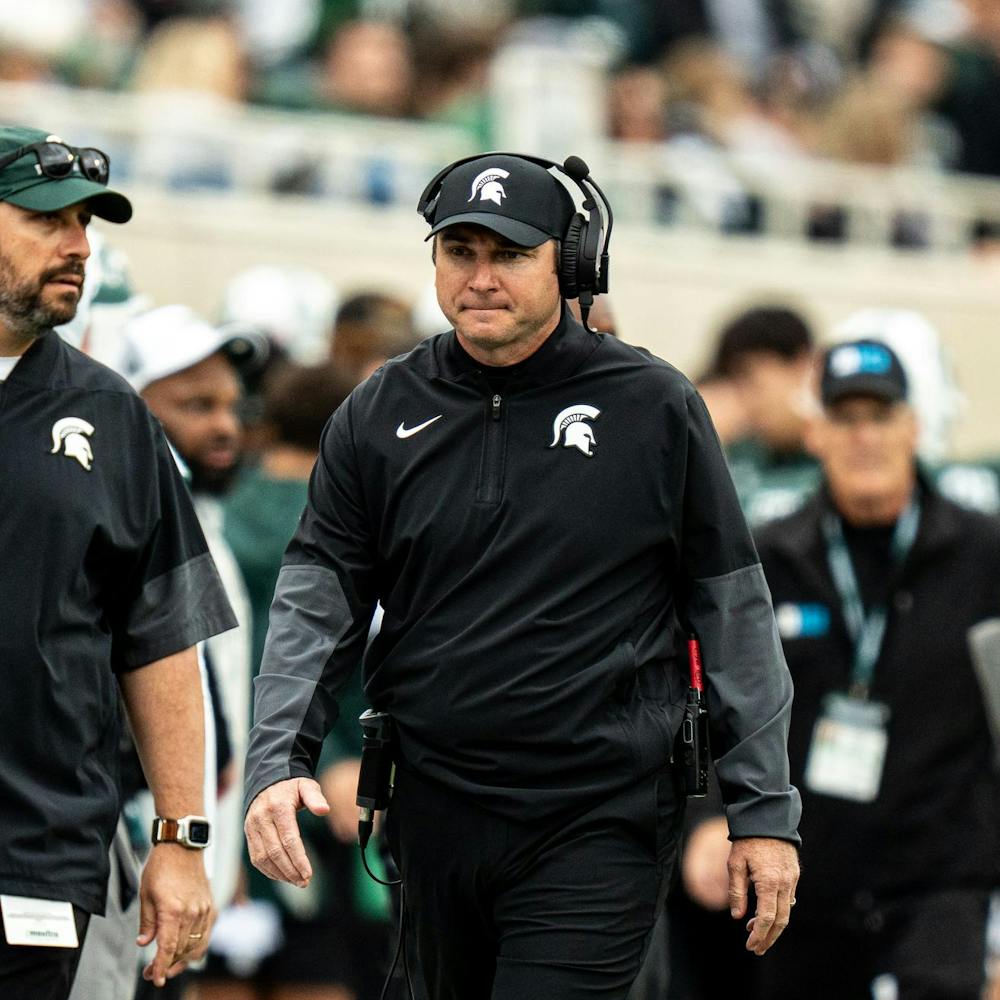Over 1,100 people have signed a petition asking for the Michigan State University Board of Trustees to lower tuition rates for the 2020-2021 academic year due to COVID-19.
Packaging junior Gabrielle Perez, who started the petition, asked the university to take accountability and find alternative revenues through “funds from donors, funds from negotiating large sums for new coaches/staff, funds from parking tickets of students/families.”
“Michigan State University has the revenue to help students, but uses the money to change the public institute into a ‘prestigious’ university," according to the petition. "This petition is being used to call on Michigan State University to ensure that they are helping rather than benefiting from the Spartan Community."
The 2020-2021 academic year tuition and room and board rates were approved by the board at their May 15 meeting. These rates are the same as the last two academic years.
The rates per semester are $7,230 to $8,595 for Michigan-resident, undergraduate students, and $19,883 to $20,786 for out-of-state, undergraduate students, according to MSU's Flat Rate Tuition website.
The freeze was proposed in response to the financial implications of COVID-19. After presenting the proposal at this meeting, finance committee chair Melanie Foster addressed the financial impacts in higher education due to the pandemic.
“The price of tuition has not been dropped despite the switch to remote learning," according to the petition. "The Board of Trustees demands students to pay the flat rate tuition for classes that were once in person. These online classes hold a far less value compared to those that were once in a classroom. The students and peers of Michigan State University presume the degree has now been devalued and deemed not equivalent to the tuition rates that the university is imposing.”
At the University of Michigan, their Board of Regents has recently passed a 1.9% tuition increase in response to the pandemic, after originally rejecting the budget just days prior. They also approved a 3.9% increase for the Flint and Dearborn campuses, and a 1.9% room and board fee increase as well as a $50 COVID-19 student fee.
UM students criticized the tuition increases, comparing to MSU, Wayne State University, Central Michigan University, Western Michigan University and Oakland University, which have all frozen tuition in response to the pandemic.
Still, the concern for MSU's tuition cost was brought up by viewers of Spartan Fireside webinars held last week.
“The price for tuition is the price for tuition,” Associate Provost for Undergraduate Education Mark Largent said. “And that’s not something that anybody on this screen right now has decided. That’s a decision made by your elected officials, the members of the Board of Trustees after consultation with the president and looking at the university’s budget.”
MSU’s budget has been under a two-year budget model, which includes the flat tuition rate model, which is based on 15 credits for undergraduate students taking between 12 to 18 credits.
“The university is not a business, it does not make a profit," Largent said. "It operates on the basis of the funds that are brought in through tuition, through its investments that come from donations and from state appropriations. This year’s state appropriations is probably going to fall quite a bit. We will lose a lot of our state appropriations."
Largent said the state’s appropriations for undergraduate students has gone from 80% of the student’s tuition cost to 18% in the last 28 years.
The 2020-2021 budget’s estimated revenue and expenditures total $1,664,894,768, an approximate $52.5 million drop from last year's budget.
It accounts for a $63 million revenue loss from tuition which includes “additional resident undergraduates, fewer domestic non‐resident students, significant international enrollment displacement,” the guidelines said.
Additionally, the budget includes a 4% increase in the financial aid budgets, a $7 million increase from the previous $185 million budget.
UM's Ann Arbor campus' general fund budget will include a 5.6% increase in undergraduate financial aid that UM President Mark Schlissel said will cover the entire cost of the tuition increase for in-state students receiving need-based aid.
At the June 26 Board of Trustees meeting, MSU President Samuel L. Stanley Jr. said based on student deposits made thus far, enrollment for fall 2020 is greater than what it was last fall.
Support student media!
Please consider donating to The State News and help fund the future of journalism.
Additionally, Stanley said he projected increased costs associated with preparations necessary for the return to campus in the fall.
MSU will also be implementing temporary faculty wage cuts beginning Sept. 1 and will be in effect for at least a year but may be extended depending on the university’s financial situation.
The cuts are using a graduated scale ranging from 0.5% for those with the lowest salaries to 7% for those with the highest salaries.
Additionally, about 800 employees have been furloughed, Stanley said in a webinar for faculty and staff.
“The tuition costs are what they are because that’s what it costs to cover operating expenses, salaries, benefits for university employees," Largent said during the Spartan Fireside webinar. "Those don’t change if a faculty member is standing in front of 600 people in a lecture hall or sitting in front of 600 people on a computer. The costs stay very much fixed."
Among other cuts made this summer were temporary university executive cuts including a 10% cut for Stanley himself and temporary cuts within the athletics staff, including Athletic Director Bill Beekman taking a 10% cut and head men’s basketball coach Tom Izzo and head football coach Mel Tucker each taking 7% pay cuts.
The petition also included concern for out-of-state or international students, who will be paying the set amount for potentially entirely online education this fall.
“Many out-of-state students feel that they can get a degree of the same value of MSU from other varying online colleges. University of Phoenix, for example, costs a mere $10,000-$15,000 a year,” according to the petition.
At last week’s webinar for international students with Stanley, he said it was difficult for them to reduce tuition costs, but he is hoping to work on creating more funds that would help international students cover costs, as their opportunities to get emergency funds are lower than others.
Vice President for Student Affairs and Services Denise Maybank said 7,400 applications were submitted from the COVID-19 SOS Funds at an admitted students webinar with Stanley. They were able to distribute $378,000 to 837 students. Grants were $500 or less. Those who didn’t receive these grants may still receive financial help from their respective colleges.
"Whether it’s online, hybrid, or in-person, ... the tuition prices have been set by the Board of Trustees ... and it’s our job to work within the budgets that they provide," Largent said. However, he does believe tuition should be lower.
“There’s absolutely no doubt that tuition should be lower," he said. "State universities can no longer be the engines for social mobility when students have to leave here $25,000 to $30,000 in debt and that’s because the federal governments and the state governments have stopped providing the type of funding that they did."
“The question for us is how do we make it the absolute best educational and social personal development experience for the students who decide to become Spartans," Largent said. "How is it that we make sure that the education that they receive sets them up to be very successful in life and that they leave here healthier and stronger than they arrived here.”
Discussion
Share and discuss “A look into MSU’s budget, tuition plans following student petition to lower fall rates” on social media.








